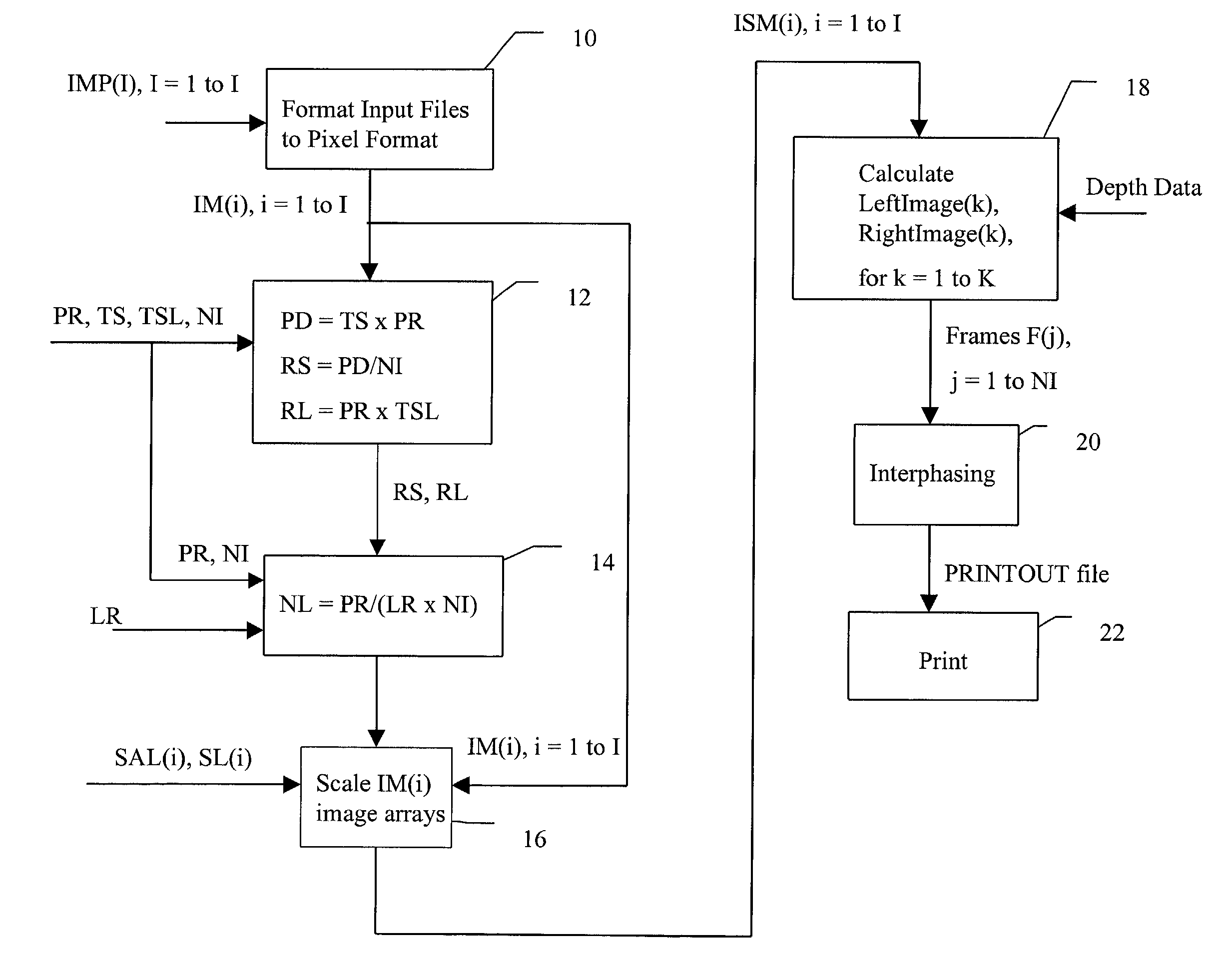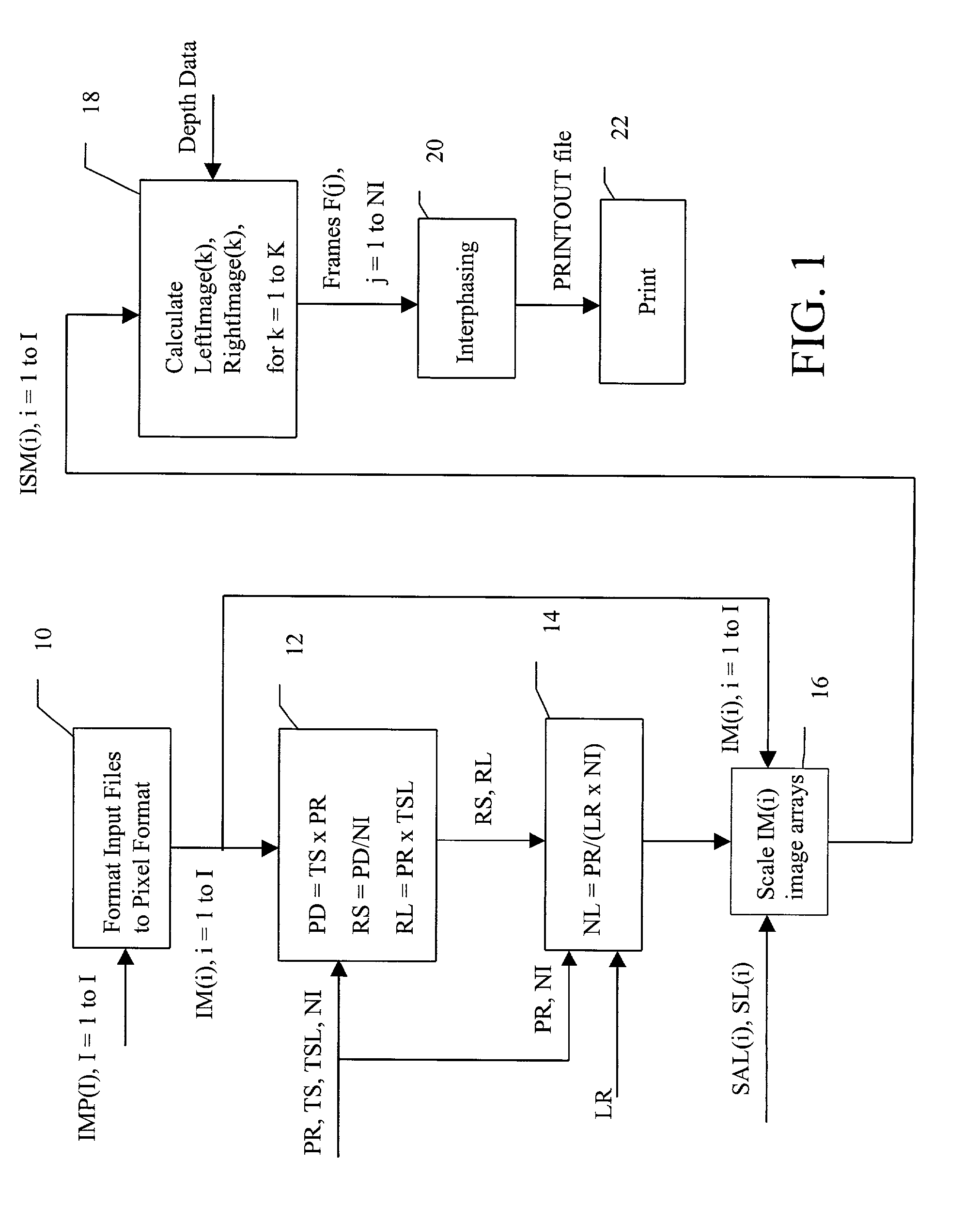Method for scaling and interlacing multidimensional and motion images
- Summary
- Abstract
- Description
- Claims
- Application Information
AI Technical Summary
Benefits of technology
Problems solved by technology
Method used
Image
Examples
Embodiment Construction
1. Overview
[0019]The methods according to the described present invention can be carried out on any of a large variety of standard commercially available general purpose programmable digital computers (not shown) having, for example, a standard protocol digital input port, a microprocessor, operating system storage, operating system software stored in same, application program storage, data storage, a standard protocol digital output port, a user interface, and a video screen. An example computer is a Dell® model Optiplex® GX 150 having a 1 GHz Intel® Pentium® III or Celeron® microprocessor, 528 MByte RAM, a 60 GByte hard drive, a 19 inch conventional cathode ray tube (CRT) video display, and a standard keyboard and mouse for user entry of data and commands, running under Microsoft Windows 2000® or Windows XP® operating system. Other examples include an Apple® iMac® having an 800 MHz G4 microprocessor, 528 MByte RAM, a 60 GByte hard drive, a 15 inch LCD flat screen display, and a st...
PUM
 Login to View More
Login to View More Abstract
Description
Claims
Application Information
 Login to View More
Login to View More - R&D
- Intellectual Property
- Life Sciences
- Materials
- Tech Scout
- Unparalleled Data Quality
- Higher Quality Content
- 60% Fewer Hallucinations
Browse by: Latest US Patents, China's latest patents, Technical Efficacy Thesaurus, Application Domain, Technology Topic, Popular Technical Reports.
© 2025 PatSnap. All rights reserved.Legal|Privacy policy|Modern Slavery Act Transparency Statement|Sitemap|About US| Contact US: help@patsnap.com


